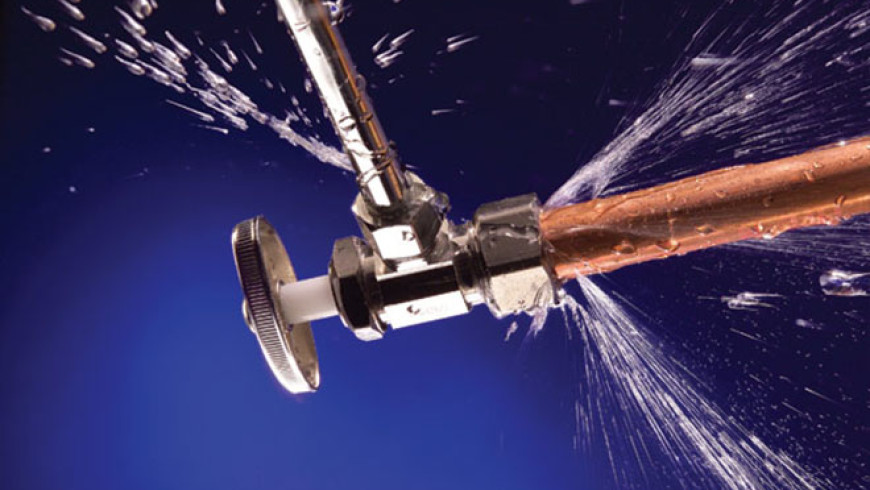How to Stop the Six Most Common Water Leaks in Your Home
How to Stop the Six Most Common Water Leaks in Your Home
Blog Article
What are your ideas with regards to How Fast Water Damage Can Ruin Your Home?

Leakages not just create waste of water yet can likewise trigger unneeded damages to your house as well as promote unwanted natural development. Water leaks might go undetected considering that most of the pipework in our home is hidden. By looking and also understanding for day-to-day situations that cause leakages, you can safeguard your residence from future leaks and also unneeded damage. Today, we will certainly check out six leakage causes that may be creating your pipes to drip.
Encroaching origins
The majority of water leakages start outside your home rather than inside it. If you see an abrupt decrease in water pressure, state in your tap, take some time to go out as well as analyze your lawn. You could notice wet spots or sinkholes in your backyard, and that might mean that tree origins are invading water lines triggering water to permeate out. You can have your plumber check for invasion, specifically if you have trees or shrubs near your residential or commercial property.
Corroded water supply
As time goes by, your plumbing system ages and also deterioration such as corrosion might start eating away the pipes. This might be the reason for staining or bending on your pipes. This asks for an inspection with your plumber quickly. If our plumbing system is old, think about changing the pipelines since they are at a higher risk of corrosion than the newer designs.
Faulty Pipe Joints
Pipeline joints can degrade over time, resulting in water leaks. If you have noisy pipes that make ticking or banging noises, particularly when the warm water is transformed on, your pipeline joints are probably under a lot of pressure.
Instantaneous temperature modifications.
Extreme temperature level adjustments in our pipelines can cause them to expand and get unexpectedly. This expansion and tightening might trigger cracks in the pipes, particularly if the temperature are below freezing. If you maintained an eye on how your plumbing functions, it would be best. The presence of the formerly pointed out situations frequently shows a high threat.
Poor Water Connectors
At times, a leak can be caused by loosened hose pipes and also pipes that supply your appliances. In situation of a water connections leakage, you may see water running directly from the supply line or puddles around your appliances.
Obstructed Drains
Clogged drains pipes could be frustrating as well as inconveniencing, however they can often end up creating an overflow bring about rupture pipelines. Maintain eliminating any materials that may drop your drains that could obstruct them to prevent such aggravations.
All the above are root causes of leaks yet not all water leakages arise from plumbing leakages; some leaks may come from roofing system leakages. All leaks should be fixed immediately to prevent water damages.
Leakages not just cause waste of water however can likewise cause unneeded damage to your home as well as promote unwanted organic growth. By looking and also recognizing for everyday scenarios that trigger leaks, you can safeguard your home from future leakages as well as unnecessary damage. Today, we will look at six leak triggers that might be causing your pipelines to drip.
At times, a leakage can be triggered by loose pipes and pipes that supply your appliances. In case of a water connections leakage, you might see water running directly from the supply line or puddles around your appliances.
How To Check For Water Leak In Your Home
How To Check for Leaks
The average household's leaks can account for nearly 10,000 gallons of water wasted every year and ten percent of homes have leaks that waste 90 gallons or more per day. Common types of leaks found in the home are worn toilet flappers, dripping faucets, and other leaking valves. These types of leaks are often easy to fix, requiring only a few tools and hardware that can pay for themselves in water savings. Fixing easily corrected household water leaks can save homeowners about 10 percent on their water bills.
To check for leaks in your home, you first need to determine whether you're wasting water and then identify the source of the leak. Here are some tips for finding leaks:
Take a look at your water usage during a colder month, such as January or February. If a family of four exceeds 12,000 gallons per month, there are serious leaks.
Check your water meter before and after a two-hour period when no water is being used. If the meter changes at all, you probably have a leak.
Identify toilet leaks by placing a drop of food coloring in the toilet tank. If any color shows up in the bowl after 10 minutes, you have a leak. (Be sure to flush immediately after the experiment to avoid staining the tank.)
Examine faucet gaskets and pipe fittings for any water on the outside of the pipe to check for surface leaks.
Undetected water leaks can happen without the home or business owner even realizing. If you suspect a water leak, but not able to find the source. It is time to contact a professional water leak detection service, The Leak Doctor.
How To Find a Water Leak In Your Home
https://www.leakdoctor.com/blog/How-To-Check-For-Water-Leak-In-Your-Home_AE197.html

I hope you liked our part about How Fast Water Damage Can Ruin Your Home. Thanks so much for spending some time to read through our piece of content. For those who liked our blog posting please remember to pass it around. We thank you for reading our article about Top Causes of Home Water Leaks.
Request Your Service Report this page